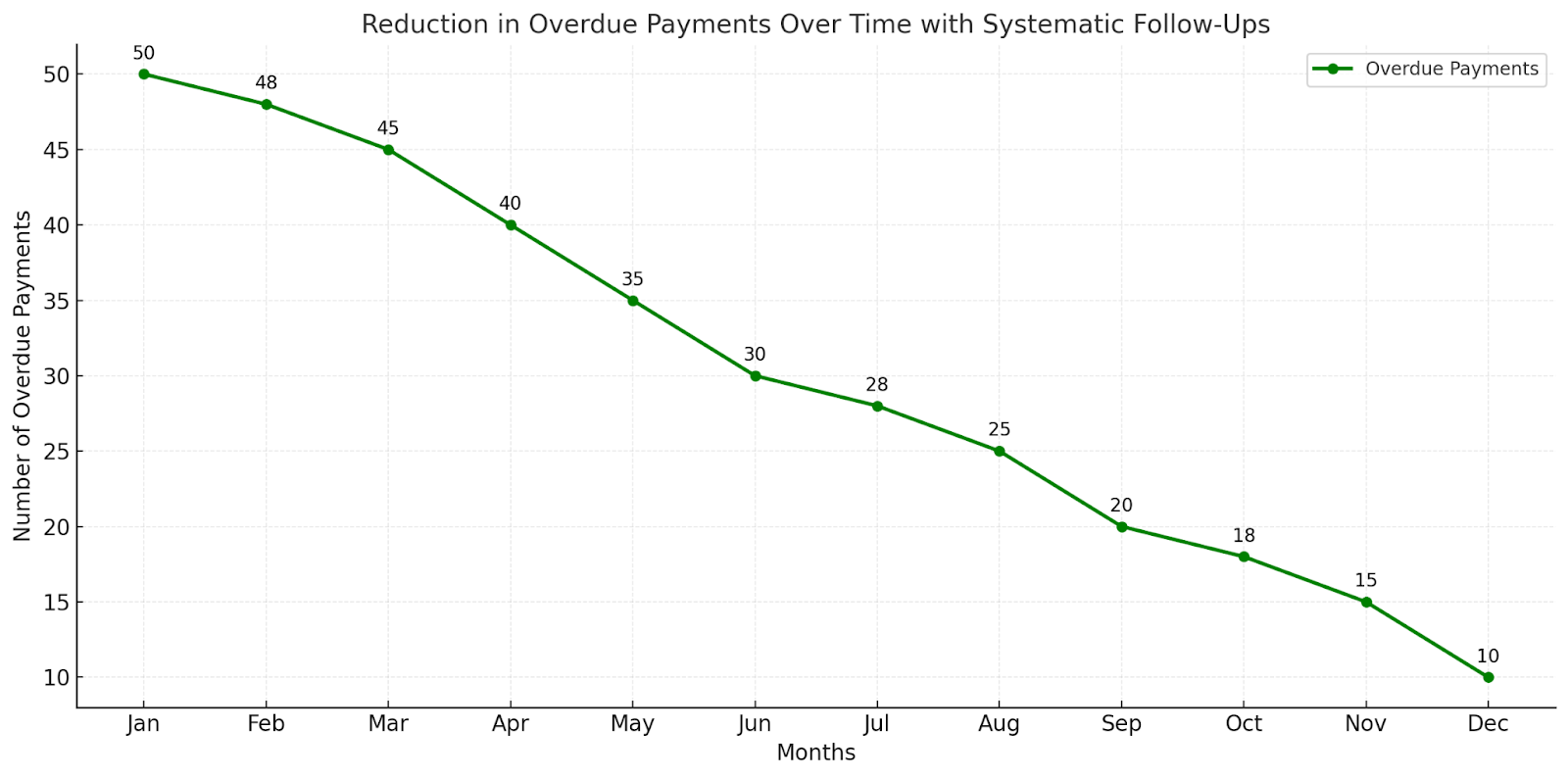

According to a new survey by QuickBooks, cash flow is the lifeblood of any business, but 81% of firms encounter late payments, with small businesses being the most affected. Late payments disrupt operations, delay growth, and strain vendor and employee relationships.
Did you know that late payments cost U.S. companies a significant portion of the $3 trillion in unpaid invoices globally? These staggering numbers highlight how crucial accounts receivable (AR) management is. For businesses to thrive, mastering AR isn’t just good practice—it’s necessary.
You're not alone if you've had trouble with past-due invoices, irregular payment plans, or unclear AR procedures. The good news is that with the right strategies, you can turn AR into a well-oiled machine that boosts your bottom line and strengthens client relationships. Let’s get started with 10 actionable accounts receivable best practices to help you master AR.
It's important to realize that accounts receivable (AR) management is both an art and a science before getting into the specific strategies. Proactive planning, clear communication, and robust systems are all necessary. You may reduce financial risks, improve client connections, and unlock a healthy cash flow by becoming an expert in these 10 tips.
A well-defined credit policy is your first defense against unpaid invoices. It guarantees that customers are aware of their responsibilities and establishes the tone for how you will manage credit transactions.
Clearly state the terms of payment, the deadlines, and the consequences of non-payment. For instance, you may impose a late fee on past-due accounts or provide a 2% discount for payments completed within 10 days. To prevent misunderstandings, clearly state these terms in invoices and contracts.
Pro Tip: To ensure every client knows your conditions, write your credit policy in simple, non-technological language.
After establishing your credit regulations, let's examine how to evaluate potential clients before granting credit.
Extending credit is a calculated risk, and conducting credit checks helps you minimize that risk. Evaluate your client's payment history, financial health, and reputation by consulting their vendor references or credit reports.
For instance, ask for a more significant upfront deposit or initially limit their credit if you're working with a company with no credit history. It's all about balancing risk with opportunity.
Pro Tip: To reduce errors and save time, use financial software to automate credit checks.
With credit checks ensuring you're dealing with trustworthy clients, it's time to streamline your processes through automation.

Errors and inefficiencies are common in manual AR processes. Automation tools like QuickBooks and Xero or specialized platforms like South East Client Services (SECS) make invoicing, tracking, and follow-ups faster and more accurate.
Imagine creating detailed aging reports with just a click of a button or automating reminders for clients getting close to their due dates. In addition to saving you time, these tools give you helpful information about how well your AR is doing.
For Example: By automating payment reminders, a regional utility company cut its past-due invoices by 40% in six months.
By implementing accounts receivable best practices like automation, you set your business up for financial success. Now that automation has accelerated your processes let's move on to another crucial area: invoicing.
Delayed or incorrect invoices can stall payments. Ensure your invoices are sent as soon as a product or service is delivered, and double-check for errors before hitting send.
Include all necessary details, such as the due date, the charges listed, the payment options, and contact information. A clear, professional invoice reduces excuses for late payments.
Pro Tip: To ensure regular and prompt billing for clients with continuous services, use recurring invoicing.
Now that your invoices are in order let’s explore how offering multiple payment options can simplify the process for your clients.
Flexibility is key to faster payments and is one of the fundamental accounts receivable best practices. You can meet your client's needs and streamline the payment process by providing various payment options, including credit cards, ACH transfers, and online payment platforms.
For instance, you may implement a payment plan that distributes the cost across multiple months if a client finds it difficult to pay a hefty invoice. This ensures that you get compensated while meeting their requirements.
Pro Tip: To provide safe transactions and expedite payment processing, collaborate with a platform such as SECS.
Once you’ve made it easy for clients to pay, the next step is staying proactive with follow-ups.

When pursuing past-due payments, consistency is essential. Establish a reminder-based follow-up strategy with 7, 14, and 30 days due dates. Communicate kindly but firmly, stressing the significance of account settlement.
For instance, an email might read: “Dear [Client Name], we noticed your invoice [#12345] is past due. Please send payment by [new due date] to avoid late fees.”
Pro Tip: If needed, gradually escalate your reminders' tone by switching from gentle prods to more formal messages.
Monitoring your progress is essential to ensure your efforts are paying off. Let’s talk about AR metrics next.

Monitoring AR performance is similar to monitoring your financial health. You may learn how well your AR procedures perform by looking at essential data like Days Sales Outstanding (DSO), aging reports, and collection effectiveness.
Create real-time updating dashboards to spot patterns or bottlenecks. For instance, if your DSO is gradually increasing, it may indicate inefficiencies in your follow-up or invoicing procedures.
Pro Tip: By focusing on accounts receivable best practices, you can use benchmarks to identify gaps and improve efficiency.
Now that we have the data, let's explore how training your teams might improve AR management even further.
When it comes to managing AR, your team is your greatest asset. Give them the tools to resolve conflicts, negotiate payment plans, and efficiently interact with clients.
Consider holding monthly training sessions on tools like SECS or best practices for managing complex accounts. A well-trained team ensures consistency and professionalism in every client interaction.
Pro Tip: To handle payment difficulties completely, encourage collaboration between your sales, customer support, and AR departments.
The next step is to establish a solid rapport with your customers.
Clients are more likely to pay on time when they feel valued. Encourage trust by being transparent, flexible, and responsive when you can. For example, if a client has financial troubles, engage with them to find a solution instead of punitive measures.
Pro Tip: Provide little incentives or thank-you notes to customers who regularly make on-time payments.
Even with your best efforts, certain accounts might not get payment. Let's talk about efficient ways to manage past-due accounts.

Regardless of your AR procedures' strength, some accounts will still slip through the cracks. Create a well-defined strategy for handling these situations, beginning with internal escalation and moving on to collections if required.
Think about collaborating with a professional agency like SECS, which focuses on collecting past-due amounts while preserving client relationships. To safeguard your financial well-being, knowing when to write off bad debt and cut your losses is equally critical.
Pro Tip: Record your process for managing past-due accounts to guarantee uniformity and legal compliance.
By having a structured approach to handling delinquent accounts, you can minimize financial losses while preserving valuable client relationships. Remember that every proactive measure you take to manage AR builds a more robust and resilient business.
Keeping a healthy cash flow and lowering risks require efficient accounts receivable management. These 10 tips offer a roadmap for optimizing your AR procedures and lowering past-due payments, from creating clear credit policies and utilizing automation to fostering strong client relationships.
You may turn AR management from a challenge into a chance for development and stability by being proactive, monitoring metrics, and educating your team.
Consider partnering with South East Client Services (SECS) to take your AR practices to the next level. Their streamlined solutions and debt recovery expertise can help you manage past-due accounts while maintaining positive client relationships. Don’t wait—contact SECS today and turn your accounts receivable into a strategic advantage!